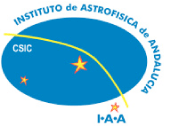Solar influences on the atmosphere and climate
What is the impact of solar variability across different time scales on the Earth’s atmosphere and climate? This is a topic of considerable scientific and societal importance. The entire atmosphere is influenced by the Sun, either directly, by ionization through precipitating energetic particles and absorption of radiation, or indirectly, through complex coupling processes involving chemistry and dynamics.

Direct heating of the Earth’s surface by solar emissions in the visible and infrared spectral bands represents the prime mechanism by which solar energy
enters the climate system. However, the variability of the Total Solar Irradiance (TSI, the total solar radiative
input) hardly exceeds 0.1% over the 11-year
solar cycle. On the other hand, the more pronounced variability of solar UV radiation has significant impacts on the radiative balance and ozone budget of the middle atmosphere. Associated changes in stratospheric temperature and zonal winds influence the propagation of planetary waves, particularly in boreal winter (Kodera and Kuroda, 2002). This synergy between radiation, chemistry, and dynamics has been suggested as a top-down mechanism that propagates solar signals from the stratosphere downward to the troposphere and the ocean. Its importance is becoming increasingly evident, in particular for regional climate variability (Gray et al., 2010).
In
addition, the potential impact of energetic
particle precipitation (EPP) on regional climate
is nowadays becoming recognized. EPP is
strongly linked to the solar cycle, either directly
by coronal mass ejections producing sporadically large fluxes of solar energetic particles or, indirectly, by the quasi-continuous impact of the solar wind on the Earth’s magnetosphere. In the mesosphere and lower thermosphere, EPP-induced ionization initiates the production of odd nitrogen and odd hydrogen, both of them destroying ozone via catalytic cycles. Odd nitrogen is long-lived during polar winter and is then regularly transported down from its source region into the stratosphere to altitudes well below 30 km (e.g., Funke et al., 2014). Satellite observations of the last two decades have provided a clear picture of this EPP indirect effect occurring regularly during polar winters. EPP-induced ozone changes are thought to modify the thermal structure and winds in the stratosphere, which, in turn, modulate the strength of the Arctic polar vortex. The introduced signal could then propagate down to the surface, introducing significant variations of regional climate, particularly in the Northern Hemisphere (e.g., Seppälä et al., 2009; Rozanov et al., 2012; Maliniemi et al., 2014). The space weather impact chain is similar to what UV radiation does, but limited to high latitudes.
Together with volcanic activity, solar variability is an important source of naturally forced climate variability. Because of its prominent 11-year cycle, solar variability on timescales of years and beyond may offer a degree of predictability for regional climate on interannual to decadal scales (Dunstone et al., 2016). With the solar activity expected to decline during the upcoming decades (Steinhilber and Beer, 2013), the assessment of solar influences on the middle atmosphere is even more crucial nowadays for identifying the natural forcing contribution to climate change.
Our aim is to address the following scientific key questions:
- What is the observed fingerprint of solar variability in atmospheric composition and dynamical parameters?
- What are the mechanisms for solar signal transfer in the atmosphere?
- What is the magnitude of variability of the different solar forcing components (radiative and particles) across all time scales?
- What are the requisites for climate models to accurately describe solar forcing impacts?
To answer these questions, we analyse satellite observations of atmospheric composition and temperature, as well as climate model simulations of different complexity. Coordinated model experiments and model validation studies with help of observational data are thereby of particular importance. We are further strongly involved in the coordination of international efforts addressing the solar influence on the middle atmosphere and climate, namely the SPARC/WCRP activity SOLARIS-HEPPA and SCOSTEP’s VarSITI Working Group 1 (Solar influences on Climate).



